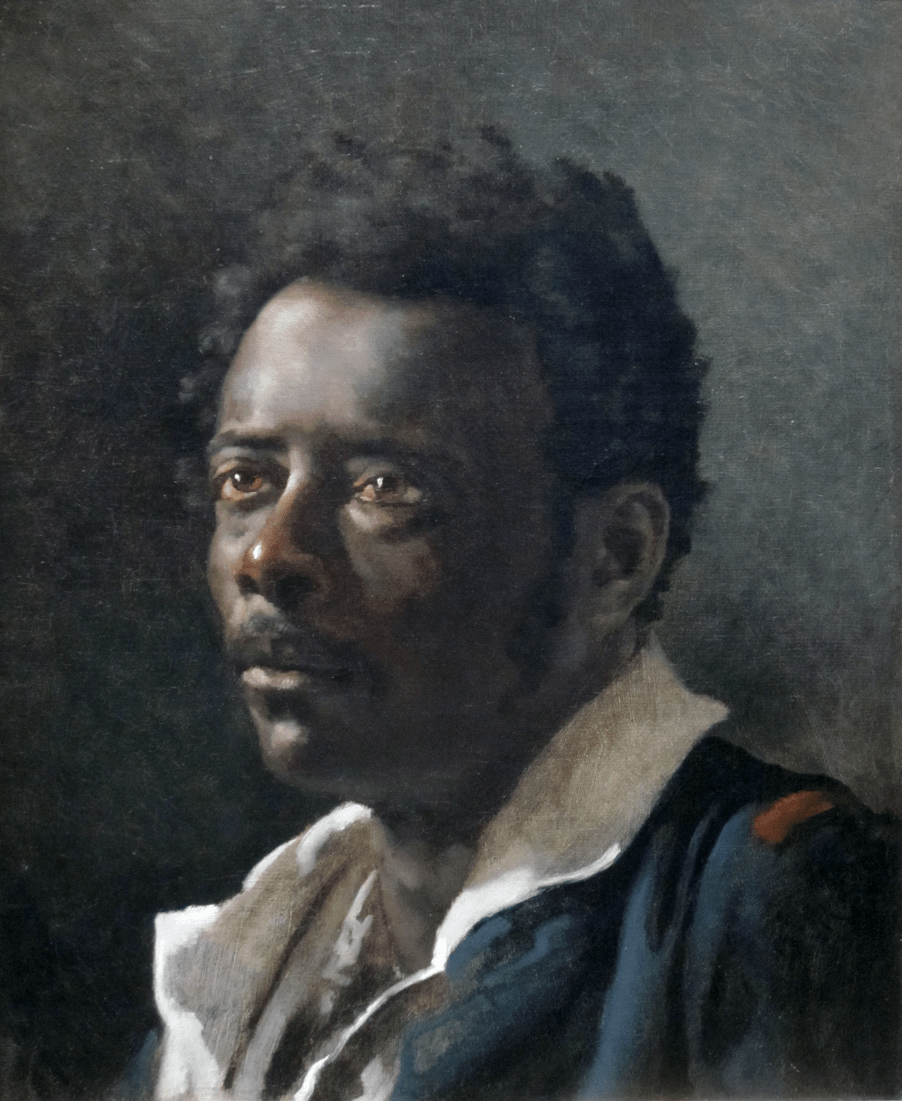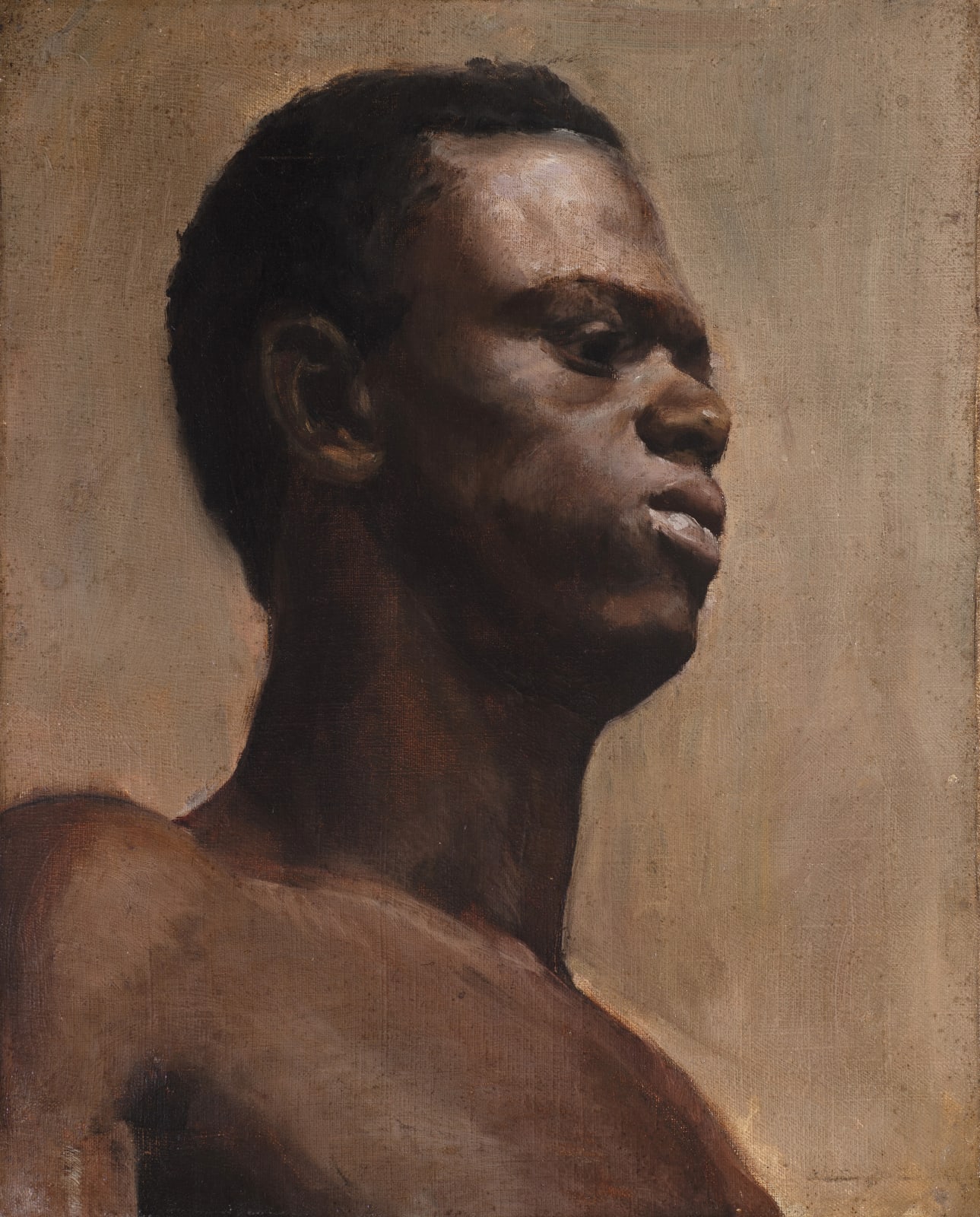European School, c.1890
Male Academic study
Oil on canvas
42 x 34 cm. (16 ½ x 13 ½ in.)
Male Academic study
Oil on canvas
42 x 34 cm. (16 ½ x 13 ½ in.)
Though undated and unsigned, this academic study was executed in Europe, likely France, towards the end of the 19th century. The artist, clearly of some skill to judge by the very high-quality, depicts the model at bust-length, from below: the model was presumably standing over the seated artist, perhaps on a pedestal. This creates quite an unusual and striking angle, with the viewer looking up at the model.
Drawings and paintings of the nude figure carried out in life classes were known as ‘academies’ and over the course of the 19th century they formed the essential practice of a traditional arts education, allowing students to better familiarise themselves with light, shade, volume and contours. It is possible therefore that the author of the present work was a young artist at one of the prestigious academies, in the process of perfecting his art. The study is however not done with the tightness and formality seen in the majority of academic studies by young artists but rather with the looseness and sense of spontaneity more reminiscent a fully-formed painter, and may be therefore more of an undertaking with no pretension beyond capturing the likeness of a handsome black model, painted in a humane and sympathetic manner, removed from the often disdainful attitudes shown by the general public towards those of African descent.
Though the black population of France at the close of the late 19th century was comparable to that of Great Britain, black models were used far more frequently in France than in other countries. The interest in black models in France goes back to Géricault and a Haitian-born model called Joseph. Joseph came to Paris with a troupe of acrobats and was spotted by Géricault, who used him as a model for three black figures in his famous Raft of the Medusa, as well as painting an independent portrait study of him (fig. 1). Joseph went on to model for other prominent artists, and became a professional model at the École des Beaux-Arts in 1832, receiving a salary of 46 francs. No one of Géricault’s generation was more highly respected by younger artists, and the example he set may partly account for the sharp increase in the number of images of black models and sitters painted in the Restoration period and over the second half of the 19th century.

Fig. 1, Théodore Gércault, Portrait Study of Joseph, oil on canvas,
47 x 39 cm., The J. Paul Getty Museum
Though there is still much we do now know, tremendous strides have been made in understanding the role of black models in France, following the recent exhibition Le Modèle Noir, de Géricault à Matisse. Between 1900 and 1930, the registers of the École de Beaux Arts lists around 40 black and Asian models amongst a total of 600; a minority but not an insignificant one. And it is worth noting that this is not the totality of black models active in Paris at this time. Like their white counterparts, there were both occasional models, using this activity to supplement an income, and professional models for whom the work was full-time. Painting a black model challenged a young artist, offering them the ‘possibility to study, in a different way, the effects of light on the body and the relationship between the figure and the background’.[1] Black models may also sometimes have been used because they charged less than Europeans.[2]
[1] E. Bégue and I. Pludermacher, ‘Les Modéles Noirs dans le Paris du XIXe siècle et du début du XXe siecle’ in Le Modèle Noir de Géricault à Manet (exhibition catalogue), Paris 2019, p. 195.
[2] A. Lafont, ‘ De Balthazar à Auguste. Figures et personnalités noires dans l’art à l’époqye de la traite atlantique’, Ibid, p. 33
